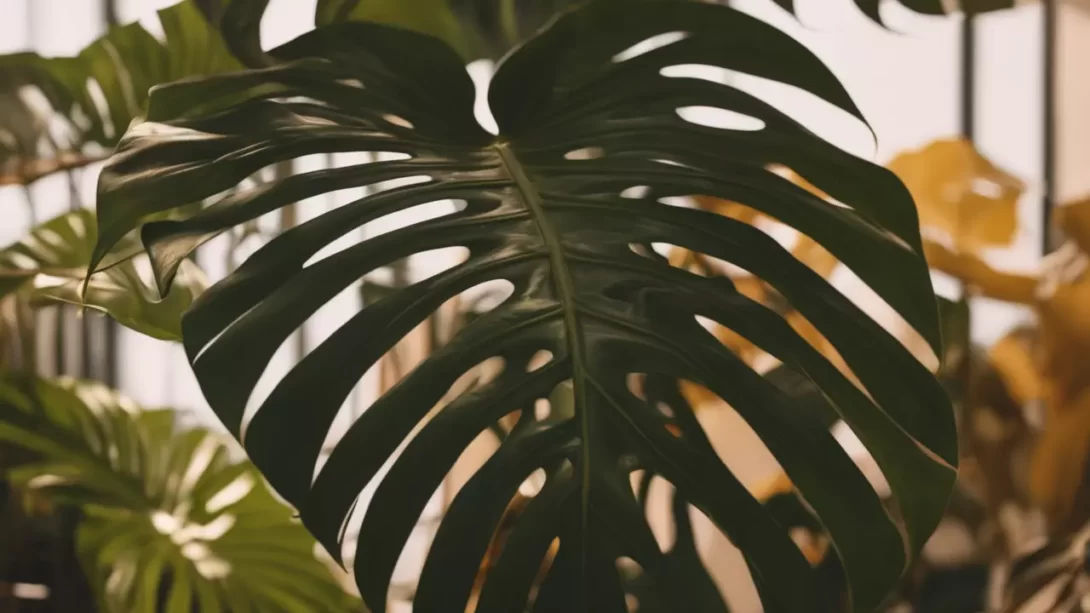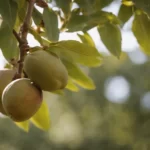The Monstera, with its distinctive split leaves, has become a beloved houseplant for its tropical flair and relative ease of care. However, Monstera owners often encounter a common problem: browning leaves. Understanding why this happens is key to maintaining the health and beauty of this plant.
Monstera Plants
Monstera plants, including popular varieties like Monstera deliciosa and Monstera adansonii, originate from tropical rainforests. In their natural habitat, they thrive in humid conditions with dappled sunlight. Monsteras exhibit a unique growth pattern, with new leaves unfurling from rolled-up shoots. Normal aging can cause older leaves to yellow and eventually brown, but premature browning often signals care issues.
Common Causes of Browning in Monstera
Overwatering
Overwatering is a frequent cause of browning in Monstera leaves. Excessive moisture in the soil leads to root rot, which prevents the plant from absorbing nutrients and water efficiently, resulting in brown, mushy leaves. The key to proper watering is to let the top inch or two of soil dry out before watering again. You can check soil moisture by inserting your finger into the soil or using a moisture meter.
Underwatering
Conversely, underwatering can also lead to browning, particularly at the leaf edges and tips. When Monsteras don’t receive enough water, their leaves can become dry and crispy. To prevent this, ensure your Monstera is watered thoroughly, allowing excess water to drain out of the pot. Consistent watering, adjusted for seasonal changes in plant growth and indoor temperatures, is essential.
Light Issues
Lighting plays a significant role in the health of Monstera plants. While they need bright, indirect light, too much direct sunlight can scorch their leaves, causing brown spots or patches. On the other hand, insufficient light can weaken the plant, leading to browning and poor growth. Position your Monstera in a spot where it receives indirect sunlight, such as near a window with sheer curtains.
Humidity and Temperature Stress
Being tropical plants, Monsteras thrive in high humidity environments. Low humidity can lead to brown, crispy leaf edges. Similarly, extreme temperature fluctuations or drafts can stress the plant, resulting in browning. Aim to maintain a room humidity of around 60% and avoid placing your Monstera near air vents, radiators, or drafty windows.
Nutrient Deficiencies or Excess
Nutrient imbalances can cause Monstera leaves to turn brown. A lack of essential nutrients like nitrogen, phosphorus, or potassium can lead to poor plant health and browning. On the flip side, too much fertilizer can burn the roots, leading to brown spots on the leaves. It’s important to use a balanced, water-soluble fertilizer formulated for houseplants. Fertilize your Monstera once a month during the growing season, and avoid fertilizing in winter when the plant’s growth naturally slows down.
Environmental and Cultural Factors
Poor Soil Conditions
The right soil is crucial for Monstera health. These plants prefer a well-draining, peat-based potting mix. Poor drainage can cause water to accumulate, leading to root rot and browning leaves. If your Monstera’s soil seems compacted or poorly draining, consider repotting with fresh, appropriate soil. Adding perlite or orchid bark can improve drainage and aeration.
Improper Potting or Root Bound Plants
A Monstera that is root-bound or potted in a container that’s too small can exhibit browning leaves due to restricted growth and inadequate nutrients. If you notice roots growing out of the drainage holes or circling the top of the soil, it’s time to repot. Choose a pot that is slightly larger than the current one and ensure it has adequate drainage holes.
Physical Damage and Handling
Physical damage from handling, moving, or repotting can stress Monstera plants, leading to browning leaves. Handle your Monstera gently, especially when repotting. Avoid touching or wiping the leaves too often, as this can damage the delicate leaf surface and cause brown spots.
Pest and Disease Issues
Pests like spider mites, mealybugs, and scale insects can attack Monstera plants, leading to brown spots or patches on the leaves. These pests typically thrive in dry conditions, so maintaining proper humidity can help prevent infestations. Regularly inspect your Monstera for signs of pests and treat promptly with insecticidal soap or neem oil if needed.
Diseases such as leaf spot or root rot can also cause browning. Overly wet soil conditions often lead to fungal diseases. If you suspect a disease, isolate the plant to prevent spread to other houseplants and remove affected leaves. Improve air circulation around the plant and adjust watering practices as needed.
Preventive Care and Maintenance
Regular care and attention are key to preventing browning and maintaining the health of your Monstera plant. Keep a consistent watering schedule, ensuring the soil is moist but not waterlogged. Adjust your watering frequency with changes in seasons and light conditions. Clean the leaves gently with a soft, damp cloth to remove dust, which can clog pores and reduce the plant’s ability to photosynthesize effectively.
Providing the right environmental conditions is also crucial. Monitor the humidity level, especially during dry winter months, using a humidifier if necessary to increase humidity. Ensure your Monstera is in a room with a stable temperature, avoiding extreme cold or heat.
Troubleshooting and Recovery
When you notice browning in your Monstera, take a systematic approach to diagnose and address the issue:
- Review Watering Practices: Check if the soil is overly dry or waterlogged. Adjust your watering schedule accordingly.
- Assess Light Conditions: Ensure your Monstera is not in direct sunlight, which can scorch the leaves. Move it to a location with bright, indirect light.
- Check for Pests and Diseases: Inspect the plant for signs of pests or diseases. Treat with appropriate remedies if any are found.
- Evaluate Soil and Pot Size: Consider whether the soil is well-draining or if the plant is root-bound. Repot into a larger container with fresh soil if necessary.
- Prune Damaged Leaves: Remove brown or damaged leaves with clean, sharp scissors. This not only improves the plant’s appearance but also redirects energy to healthier growth.
- Adjust Environmental Factors: Improve humidity and temperature conditions around your Monstera.
- Be Patient: Recovery can take time. Continue providing optimal care and observe changes in the plant’s condition.
Conclusion
Browning leaves on a Monstera plant can be disheartening, but understanding the causes can help you take corrective action. By monitoring watering, light, and humidity conditions, and providing the right soil and nutrients, you can often reverse or prevent browning. Regular maintenance and prompt response to any signs of distress are essential for keeping your Monstera healthy. With patience and careful attention, your Monstera can continue to be a lush, vibrant part of your indoor garden.



